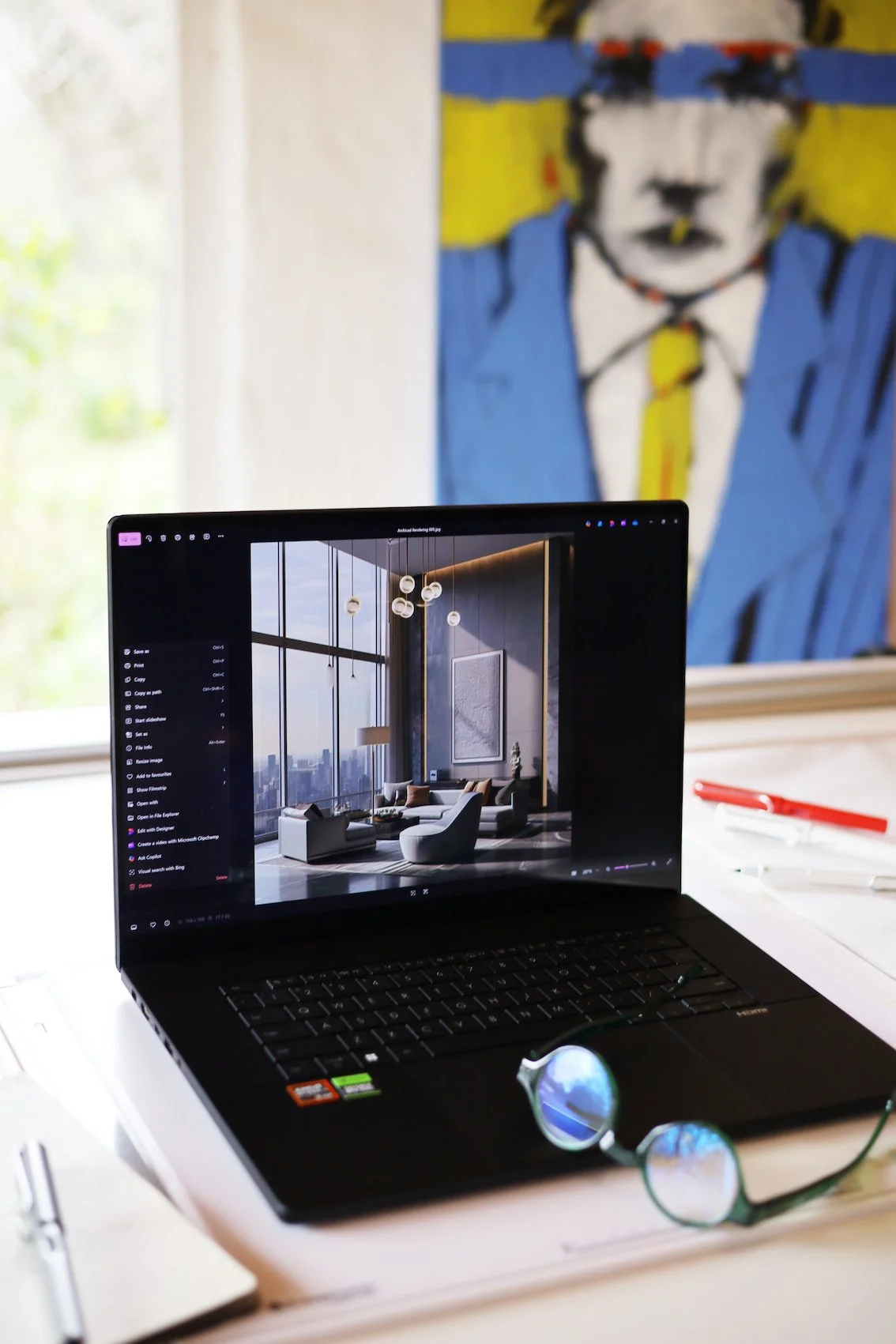A Machine Made for Creating Reviewing the ASUS ProArt P16
A Machine Made for Creating Reviewing the ASUS ProArt P16 Through the Eyes of an Architect
There’s something quietly reassuring about using a tool that seems to understand your rhythm before you do. The ASUS ProArt P16 doesn’t arrive with the spectacle of a gaming laptop or the stark minimalism of a boardroom machine. Instead, it feels purpose-built—robust enough for architectural workloads, yet refined in its mannerisms. I’ve spent the last month living with it: in studio meetings, across dusty site visits, deep into CAD drawings, and through the late-night lull when rendering becomes meditation.
What strikes first is its tactility. The matte-black shell, cool to the touch, resists fingerprints and blends seamlessly into the studio’s quiet aesthetic. It doesn’t compete visually with scale models or printed plans—it complements them. Opening it, the OLED screen stuns: luminous, color-faithful, and wide enough to handle dual-plan comparisons without squinting. More than once, I caught clients leaning in—not to look at the concept itself, but to admire how true it looked onscreen.
In practical terms, the P16 performs like a well-oiled drafting table. Archicad opens swiftly; navigating 3D views is fluid, even when projects sprawl across disciplines and consultants. Revit’s quirks—especially when juggling linked files—are mitigated by the sheer horsepower under the hood. Photoshop, for concept sketches and presentation boards, benefits from both processing speed and display fidelity. What’s rendered is what’s printed—a rare and precious consistency.
There were days when that consistency mattered most. I recall a client arriving thirty minutes early for a site visit—their first time reviewing the concept in full. With no projector in sight, I flipped open the P16, called up the SketchUp model, and navigated the massing study directly on the touchscreen. We spun it, annotated it, made changes. What could’ve felt rushed instead felt intimate and immediate.
Then there was the gallery showcase—a pop-up event presenting four proposed urban interventions. The final renderings needed impact, but the OLED display delivered something more: atmosphere. Nighttime visuals from Lumion glowed with cinematic depth. By the end of the evening, one stakeholder had already requested presentation specs for the third site.
The ProArt P16 also quietly became indispensable in the workflow beyond design. A weeklong travel schedule took me across three cities, and the laptop was with me on every plane, at every café counter, and in every site office. I never needed a docking station. High-res drone photos from site surveys imported in seconds via the SD card reader, allowing me to update boards in Photoshop while sipping espresso between meetings.
Late one Thursday, facing a looming client deadline, I kicked off parallel render jobs in V-Ray and Lumion—a true stress test. The fans hummed; the display dimmed to conserve battery; but the laptop didn’t blink. I edited specs in Word while the renders completed and was out the door by midnight. The ProArt Creator Hub's quiet mode offered just enough stillness for the final slide deck to come together without distraction.
Is it perfect? No laptop is. I wouldn’t mind a sleeker power brick, and the fans do speak up under sustained rendering loads. But those are trade-offs I’ll take if the machine keeps pace, which it unfailingly does.
For architects who see their laptops less as gadgets and more as creative infrastructure, the ProArt P16 is a fine companion. Not flashy—but consistently excellent. It earns its place by shouting specs, and by showing up, hour after hour, with quiet, deliberate strength.
Renderings:











